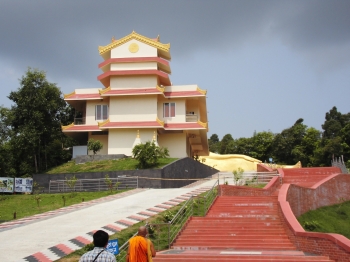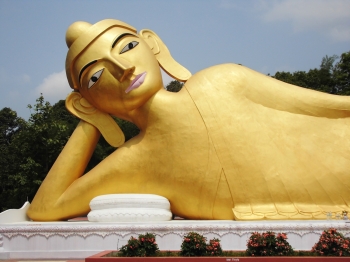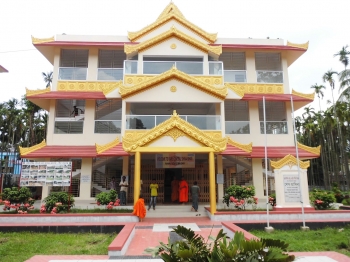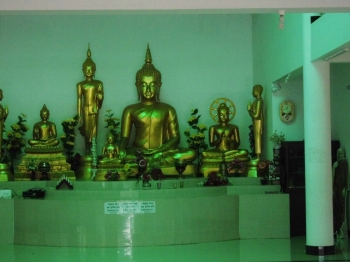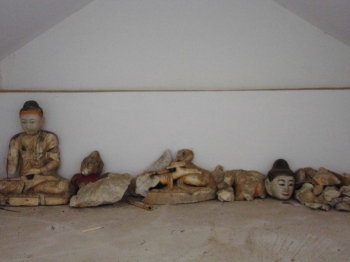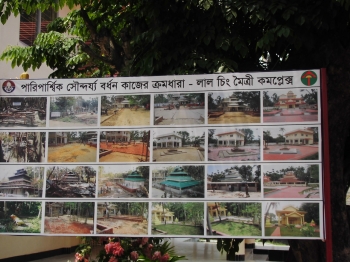This is the fifth article in our series “Buddhist Voices from the Land of Rivers.” Here, John Cannon explores an appropriate response to the damage caused by communal clashes in Bangladesh.
On 16 December, the Buddhist temple Koruna Bihar and about 50 houses in Naniarchar Upazila, Rangamati District, in the Chittagong Hill Tracts of Bangladesh, were vandalized and burnt by Bengalee settlers in a land dispute with the indigenous Buddhist Chakma community. Two days later, the Chittagong Hill Tracts Commission released a statement calling for clarification of the role that the local civil administration, law enforcement officers, and the army may have played in the disturbances. According to an article published in the Dhaka Tribune, on 21 December there was still a lack of food, shelter, and warm clothes for the victims. However, Rangamati deputy commissioner Mostafa Kamal said that 20 kg of rice had been given to each family and that 15 houses were already being rebuilt, with “the process to repair 16 more houses . . . also underway.” Apparently the injured parties had in fact received the rice, but had seen no evidence of reconstruction as yet.
This incident in Rangamati is the latest in communal, ethnic, and religious conflicts that are being played out throughout the world. Wherever these incidents arise, people are caught between the sticky web of hatred, violence, and vengeance and the human need for objective understanding, feelings of compassion, and the desire for justice in order to bring closure and peace to all parties. We must recognize and transcend what is stated in the Dhammapada—that “hatred begets hatred, violence begets violence”—or we will condemn ourselves to a senseless repetition of such acts.
I am reminded of a visit I paid last May to Ramu, a sub-district of Cox’s Bazar in the Chittagong Plains and the scene of communal strife in 2012, and of what parties on both sides of the divide have done to accept responsibility and restore hope.
Ramu is just one among several areas in the Chittagong Plains that experienced severe communal violence at the end of September 2012, resulting in the destruction of many homes and Buddhist temples and monasteries. During the incident, 1,000 Buddhist families had to flee for safety. The attacks were condemned by the government, which promised to take action by rebuilding what had been destroyed.
The spark igniting the conflagration was the posting of a fake image of a burnt Qur’an on the Facebook wall of Uttam Kumar Barua, a local Ramu Buddhist. Muslim residents in Ramu took offence, leading to demonstrations and violence that lasted until 1 October. Before the attacks ended, the violence spread to other areas of Cox’s Bazar: Ukhia Upazila, Marichya, and Khairatipura, and then to Kolagaon, Patiya, and Lakhera in Chittagong District. Altogether, 24 religious buildings were attacked, including the two Hindu temples Nabaran Sangha Durga Mandir in Kolagaon and Mantri Mandir in Jelepara.
While it is natural for emotions to run high and it is easy to become entangled in a blame game, how much better to step back, letting go of unwholesome feelings of hatred and vengeance and focusing instead on compassion, justice, and healing for everyone involved.
To the government’s credit, it responded quickly to the crisis by setting up a committee of inquiry on 30 September to investigate the incident. On 6 October, the prime minister of Bangladesh Sheikh Hasina condemned the violence against Buddhists: “Peace, friendship, and religious harmony are our pride, and the Ramu incident shames us all” (ucanews.com). Promising justice, she visited the distressed areas on 8 October, and instructed the Engineering Corps of 17 ECB Battalion Cox’s Bazar to rebuild the damaged temples at a cost of BDT120 million (US$15 million) as part of the project “Rebuilding and Renovation of Damaged Buddhist Temples.” More than 100 homes were also rebuilt.
